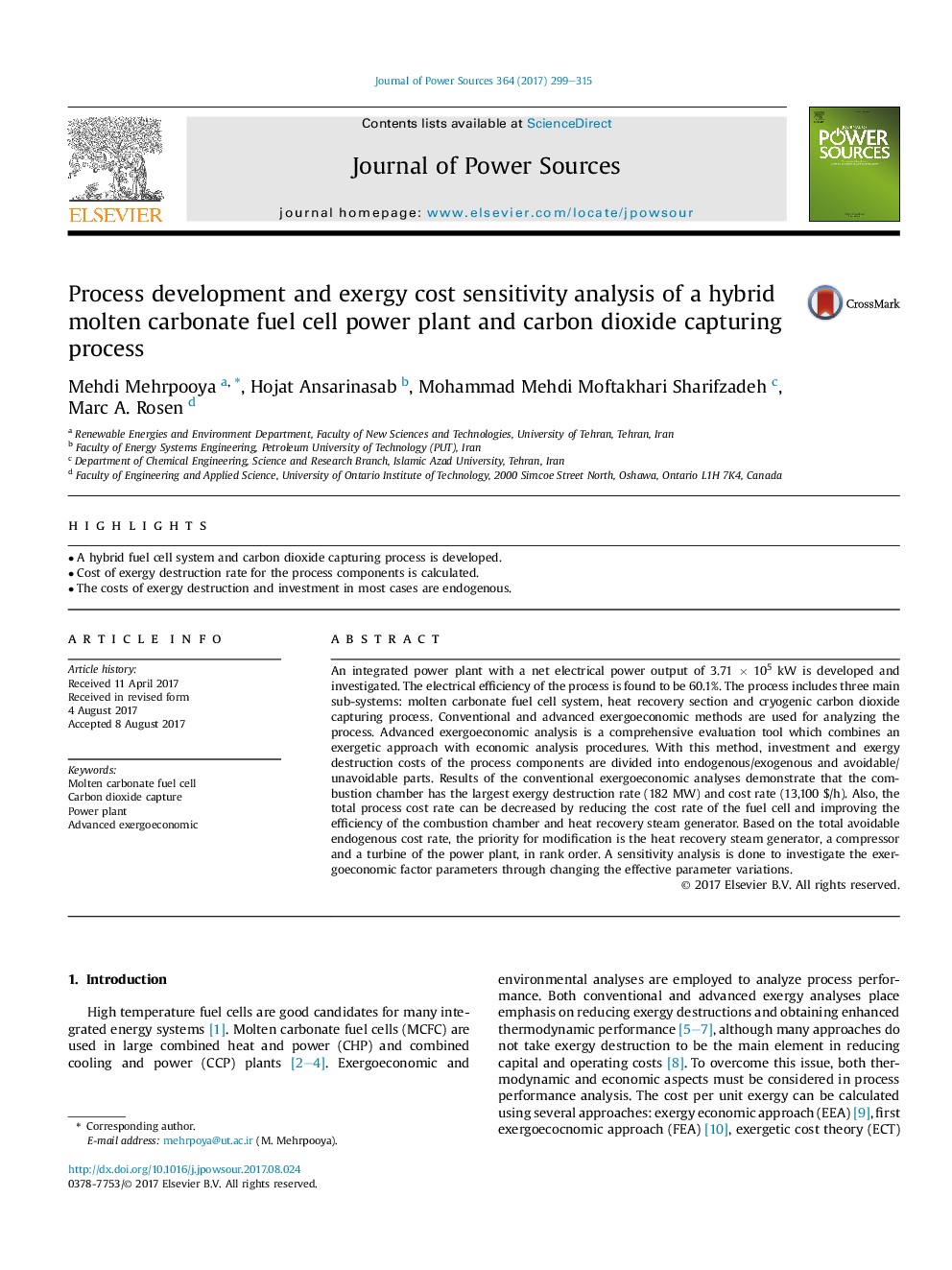ترجمه فارسی عنوان مقاله
تجزیه و تحلیل فرایند و حساسیت هزینه های اگزرژی یک نیروگاه سوخت سلولی سوخت کربن ذوب هیبرید و روند جذب دی اکسید کربن
عنوان انگلیسی
Process development and exergy cost sensitivity analysis of a hybrid molten carbonate fuel cell power plant and carbon dioxide capturing process
| کد مقاله | سال انتشار | تعداد صفحات مقاله انگلیسی |
|---|---|---|
| 96862 | 2017 | 17 صفحه PDF |
منبع

Publisher : Elsevier - Science Direct (الزویر - ساینس دایرکت)
Journal : Journal of Power Sources, Volume 364, 1 October 2017, Pages 299-315

